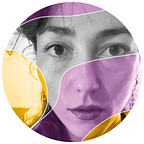Bio-Mimicry of Abstractions
aka: how sea-sponges may teach us something about Information Architecture
How many times do we hear the pairing of the terms “flow” & “information”?
It’s a pretty used one, and it honestly works very well. We can easily imagine information as something that flows, like a liquid. And, as so, it takes the shape of its container, can move in disruptive ways, its absence determines scarcity and it is much better when it is transparent.
Information and its flow came into my mind while I was exploring a collection of old prints in a market in Spui, Amsterdam. Earlier in the morning, I was randomly reading something about information architecture — and in the ponds of my mind, those infos about infos were somehow waiting to merge with a new stream of concepts. And here it was: sea sponges on a print in Spui.
Sponges are kind of animals (now I don’t want to insult any marine biologist, maybe “animal” is not technically right to say, but I will use this concept quickly, and with no serious consequences) — and, just like every other form of life, went through the best school of improvement, which is life itself (and apparently they attended classes for the longest time, as it seems like sponges are the oldest living animal on Earth).
Their success has been encrypted in how they’re made. Miraculous chemistry, of course — a symbiotic collaboration with other forms of life, sure (how much can we learn from sponges?) — but also their strange, complex, intricated structure played quite a role. It’s so well done, so harmonious, so intriguing — the guy behind that print captured this very well. All this elegance and beauty — what function does it serve?
Well, basically the structure of sponges is there to let water flow in, direct it through filters to absorb breakfast, and then let it out again — all in the less harming and most efficient way. This happens in roughly two phases:
- in a first, passive phase, the force of water, with its given magnitude and direction, determines its own entry conditions within the sponge (something that we would call a liberal approach), with the sponge doing nothing apart existing and being porous. The architecture will act as the physical constrains determining the evolution in time of the stream’s state once inside the sponge (where and how water will flow). This is a distribution phase that happens before real nutrition takes place;
- a second, active phase, where specialized ciliated cells propel water in the smallest chambers and channels of the sponge, at a microscopic scale, with the precise intent of collecting and absorbing nutrients to live. Cells get to choose where and when to direct flow locally, to get the best out of it.
Wait, why sponges now? Weren’t we talking about information architecture? By now, you should know where I’m heading.
What does the structure of sponges, and its consequences on flow dynamics, teach us about how information could flow in the most nutritious way? What is a good method to let information in and out of a system?
Shouldn’t bio-inspired information architecture theories be a thing?
You guess right if you think my personal answer is surely yes.
Where to start?
Well — it all starts with modeling: find those things that define your system, incorporating just the right amount of complexity you need; not much more, not much less.
Maybe sponges are telling us that different types of information (see it like different streams of sea, with given force and direction) should naturally flow in huge, pre-designed channels with no filtration, and only then, at a micro-level — there where the actual uptake takes place — filtering and directing may become crucial. Also, huge passive channels should just go in every direction, because you don’t know a priori where good information will come from. That’s what sponges do with water, at least.What other incredible insights could we have? Maybe from something that is not even a sponge…
Honestly, this could be a whole field of study on “abstract-concepts biomimicry”, and I can’t expect to be in any manner right, or comprehensive, in what I wrote. I’m not a marine biologist. I’m not an information architect. I’m just a girl who had a spark of imagination in a Spui market in Amsterdam.
